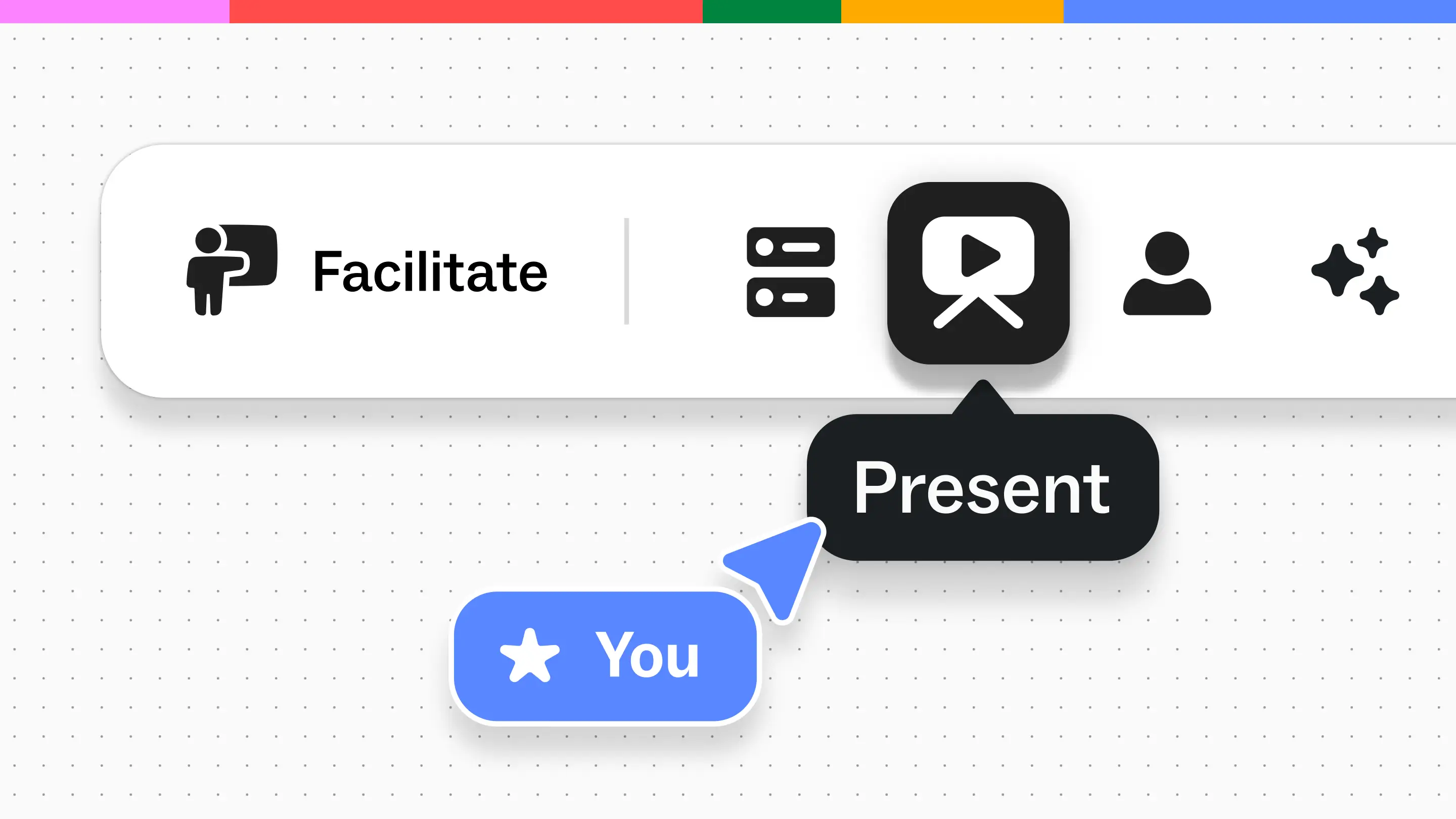There’s a reason we have an entire genre of memes dedicated to ‘this meeting could have been an email.’ Asynchronous collaboration is key to building successful hybrid teams.
In my early thirties, I traveled full-time while working. It was dreamy: motorbiking in Vietnam, drinking espresso in Portugal, hiking in US National Parks. Being a digital nomad got me addicted to async-first work.
My clients and team were located all over the world. Still, I found I could leverage video messages, project management tools, and written messages to easily get work done across time zones. The beauty of asynchronous collaboration, when done right, is that you can work together effectively no matter where you are.
What does async-first mean?
Async-first means teams default to asynchronous communication — fewer meetings, more documentation. When team members meet synchronously (on a video call or by phone, for example), time is spent on high-value interactions like building relationships, making decisions, or strategy conversations. One-way communication like updates, lectures, or information sharing are easy in asynchronous formats (think: email, chat, or video recording).
Hybrid companies and remote teams can both benefit tremendously from adding more async practices to their workflows.
Why async?
The benefits of async-first work are plentiful: flexibility, heightened productivity, and an empowered team.
Flexibility
Employees have the freedom to choose when they work on async tasks, which allows them to align their work with their personal lives, reducing burnout and increasing productivity. This leads to happier employees, who in turn are more productive and create a positive work environment for everyone.
Collaboration
Teams across time zones can contribute to murals or docs without needing to be in a live meeting. This is a great way to collaborate and get work done even if people aren't in the same room.
Focus
Uninterrupted time for deep work leads to higher-quality outcomes. Async work also means that focus time can be whenever your employees are most productive, naturally adjusting to the different rhythms of each team member rather than enforcing a rigid schedule.
Documentation
With clear, written communication, team members have immediate access to the information they need — whenever they need it — to make decisions and perform their tasks.
Inclusivity
By providing asynchronous methods of team communication, people who may be less comfortable with real-time communication can feel more included and a part of the team.
6 best practices for global teams and async-first work
Right before the pandemic, I joined a global async-first team, and we used tools like Mural, Asana, Slack, and Loom to communicate, manage projects, and work with clients to teach them about async and remote work (I know — so meta). The flexibility that async work offers has sustained my career. Between new clients, new cities, a new baby, and a new team, I’ve relied on this form of work to make sure I stay productive and avoid burnout.
Last winter at Mural, when I joined a brand new team, I jumped at the chance to help the team build our async processes from the ground up.
Muralistas already operate remote-first. We’re a distributed company, so our team members absolutely shine at virtual collaboration. My new team ranged from the US West Coast through Europe, and we were excited to create an async-first team from scratch.
Here’s how we did it.
1. Clarify communication norms with a team charter
Your team already has ways of working and communicating. Whether you’re an MS Teams shop or spend all your time in Slack, integrate async-first habits into your existing tools.
When our Professional Services team was created, my colleague Ale suggested creating a ‘team operating system’ inspired by this Medium post. We whipped up a mural, and assigned each team member a different category. The experience was intentional: we worked asynchronously to document our async team norms. By practicing working asynchronously to craft this document, we quickly identified gaps in our collective skillsets and homed in on whether the behaviors we were documenting worked in practice.
Using mural features like comments and voting, we made preliminary decisions async, and when it was time to make final decisions we gathered live on video.

Build your own team charter using the Mural team charter template, and document the communication tools and norms for your team. Prioritize which meetings absolutely need to be synchronous, and decide if there's workflows that can be converted async.
Async actions:
- Align on your async tool stack
- Document communication norms in a team agreement
2. Build trust with a blend of sync and async
Once we determined that most communications would happen async in our Slack channels and Asana projects, we started adding synchronous meetings to our team calendars. Because we decided to default to async work, it became clear very quickly that we only needed a few live meetings a week. These live conversations are where we built trust, getting to know each other personally. And of course, while everyone was motivated to get their work tasks done, a few synchronous reminders were always appreciated.
Our team of eight decided to forgo initial 1:1s by video call, and instead scheduled “Walkie Talkies” — or casual phone chats. Purely social in nature, our informal phone conversations sped up the getting-to-know-you process, since it was easy to find time for a 20-minute chat while we exercised, walked the dog, or folded laundry. Plus, they add a touch of fun and spontaneity to our routine meetings with a formal agenda and a mural. There’s something about chatting on the phone or FaceTime with your colleagues (and meeting their pet or baby — maybe even both!) that feels more intimate.
Another thing that helped build trust in the early days, was when our manager Kate shared her live notetaking in Mural or docs during company all-hands meetings. Since we have global colleagues and new parents on our team, some of us watch the recordings, and refer to her notes for additional context. This was an invaluable peek into her lens and perspective of the conversation, and synthesized what she found to be important, which helped us understand her better.
Async actions:
- Start with async work, then add in critical meetings for relationship building
- Schedule casual phone conversations with your team members
- Share notes in real time via a mural
3. Block calendars for intentional work
A challenge our team ran into early on was finding time to meet synchronously. We span 10 time zones, and struggled to find a time where everyone was available. Through a vote we found a sweet spot during a 3-hour stretch each day. Blocking this time for our team connection and decision-making meant the rest of our days could rely on mural collaboration, chat, and video messages.
Time-blocking is another async-first habit that's helped us reduce the amount of time spent in unnecessary calls. This Doist article explains the details, but getting started is as easy as picking one day a week for deep work, and no meetings. I practice ‘no meeting Fridays,’ and my colleague Thria blocks Tuesdays. Other team members use automated calendaring features like Clockify to determine when to take breaks and do focused work throughout the day.
Of course, as a client-facing team, we make exceptions for important client meetings, but the calendar block is a signal to our internal team members that we’re prioritizing focused work. It’s challenging to say no to requests for meetings, so this habit works best when leaders and managers align with their employees on a team-wide async day, or give explicit permission to say no to meetings.
Async actions:
- Try blocking one day a week for no meetings
- Decline or reschedule meetings to prioritize async work
- Dedicate a few mornings or afternoons a week to focused work
4. Assign tasks asynchronously
Our team uses Asana to manage our task workflows, but sometimes a shared excel sheet or a mural is a better fit. We also will informally send Slack messages to assign very quick asks that take only a few minutes and can be completed in the flow of work. We use emojis like check marks or “done” to indicate when the task is completed.

But Asana is best for week or month-long projects. Since every task and project is organized with an owner, description, mural links, deadlines, and subtasks, team members can pick up where others left off, seamlessly progressing towards our goals. Plus, email notifications keep everyone in the loop, making sure that no crucial information is missed.
Async actions:
- Assign small tasks in channels and use emojis to indicate status
- Rely on excel sheets or project management tools for comprehensive tasks tracking
5. Collaborate async using Mural features
Of course, we use Mural for async collaboration. Collaborating asynchronously with an online whiteboard is critical for teams like ours spread out across different time zones and schedules. We especially enjoy using the comments feature, because it allows team members to provide feedback, ask questions, or share insights directly within the context of a project. Even when we aren't working at the same time, we can still engage in a meaningful discussion about specific elements on the mural, and get email updates when we’re away from the canvas. Some colleagues experiment with 24-hour voting sessions, keeping them running for a full day so team members globally can contribute.
We also work hard to reduce the time on our calendars, since folks are so busy. Running “blended meetings” in mural, or a combination of async and sync has been helpful for both our internal teams and our clients. By assigning pre-work in the mural before a meeting, people can read, add stickies, and watch videos, contributing to the discussion asynchronously. This offers context for the live discussion, which prioritizes connection, solving complex problems, and making big decisions.
Async actions:
- Use mural for async collaboration
- Try features like commenting and voting
- Run a “blended” meeting by assigning pre-work in a mural
6. Connect with the team sync and async
Many of our team bonding moments happen in live meetings: We gather synchronously to celebrate and connect. There’s no replacement for conversation in real time. Donut.ai is a favorite tool at Mural for scheduling random phone calls with someone new, so when our team wants to socialize with another Muralista, we make sure to add this into our routines. While we set aside time to prioritize synchronous connection, async connections are important too.
My team loves to use a mural to write our birthday wishes or wish people luck for big life changes, often combined with sweet video messages and pictures of fond memories. My colleague Sam recently designed a popstar-themed baby shower. And every week, we share photos from our weekend in our team channels, which help us feel connected to one another.
Sometimes my colleagues will pose a question: What are you grateful for? What’s the funniest thing that happened this week? And we’ll respond when we have a free moment.
Async actions:
- Use mural as a virtual card
- Share photos async of your weekend or vacation
- Write and respond to thoughtful prompts
Embrace async-first
Building an async-first team requires intentionality: establishing norms, fostering a culture of trust, empowering your team, and embracing virtual collaboration.
If you're eager for more, Mural's Professional Services program, New Ways of Working, includes a three-workshop series designed to guide your hybrid or remote team into the world of async collaboration to help you transform the way you work.
If your team is looking to revamp their communication habits or tool stack, the Professional Services at Mural team can help assess your existing tools and help you establish and document norms with a team agreement.
Get in touch with our Professional Services team to learn more.


.avif)
%20(3).avif)









